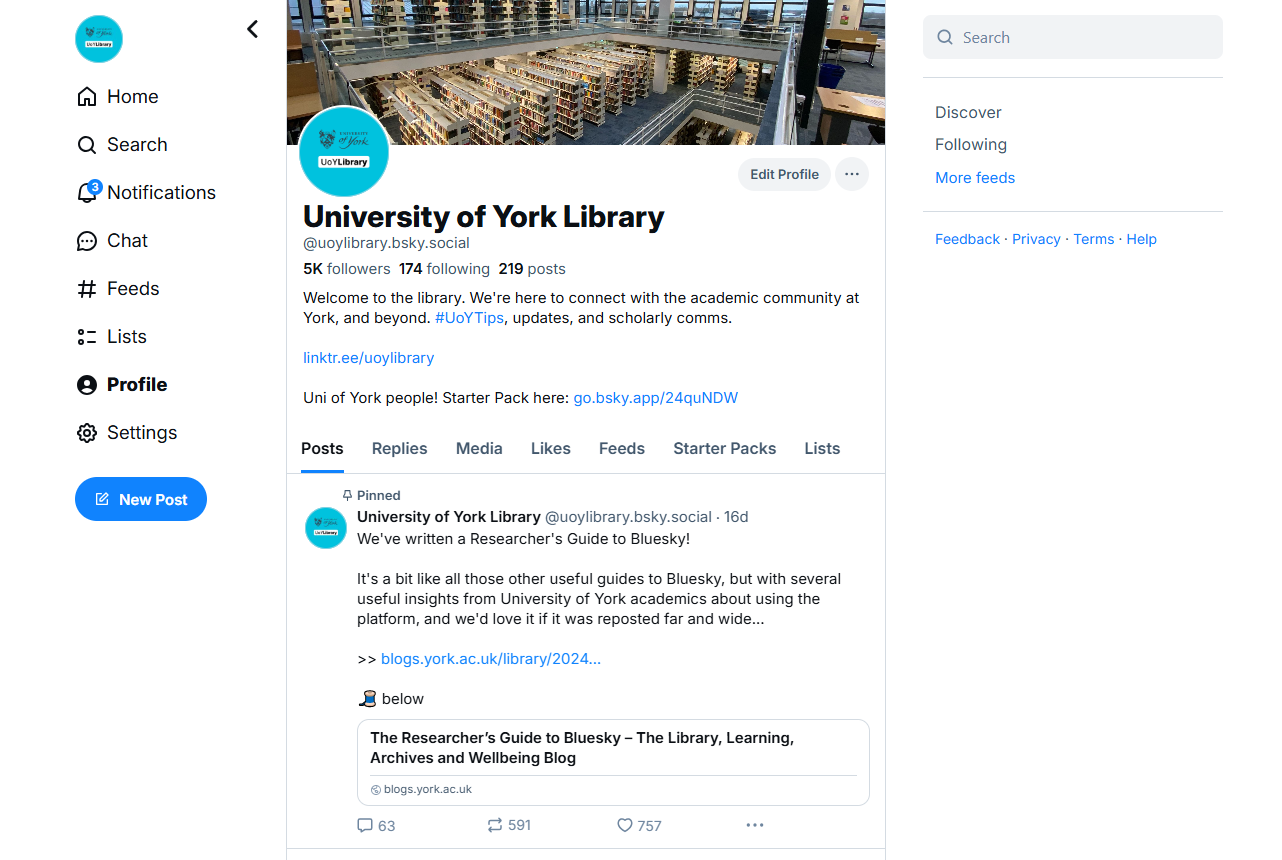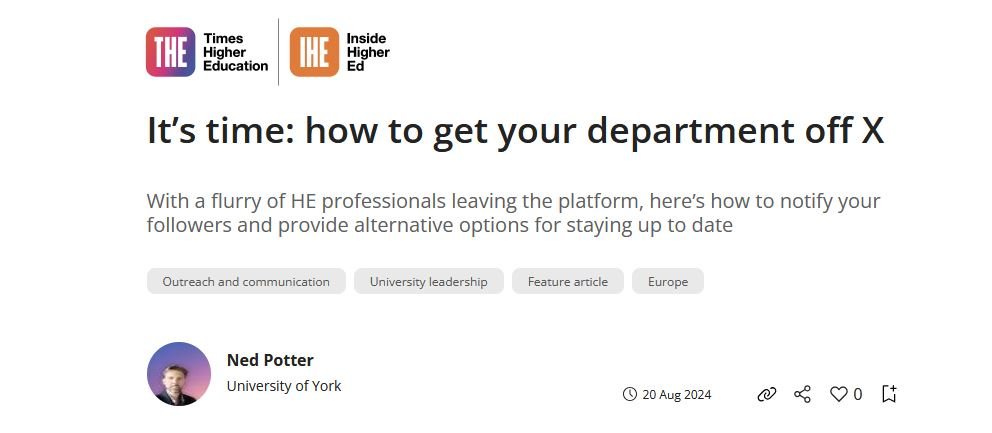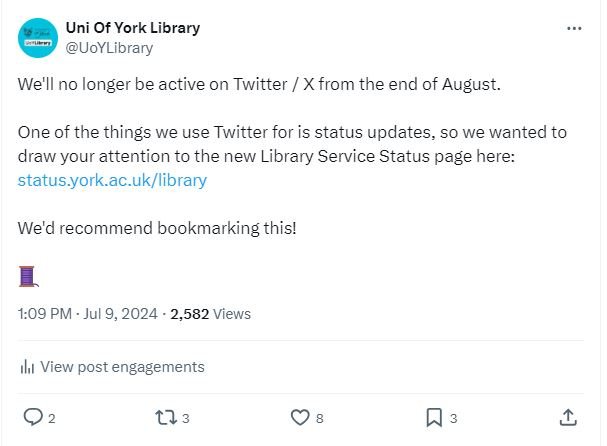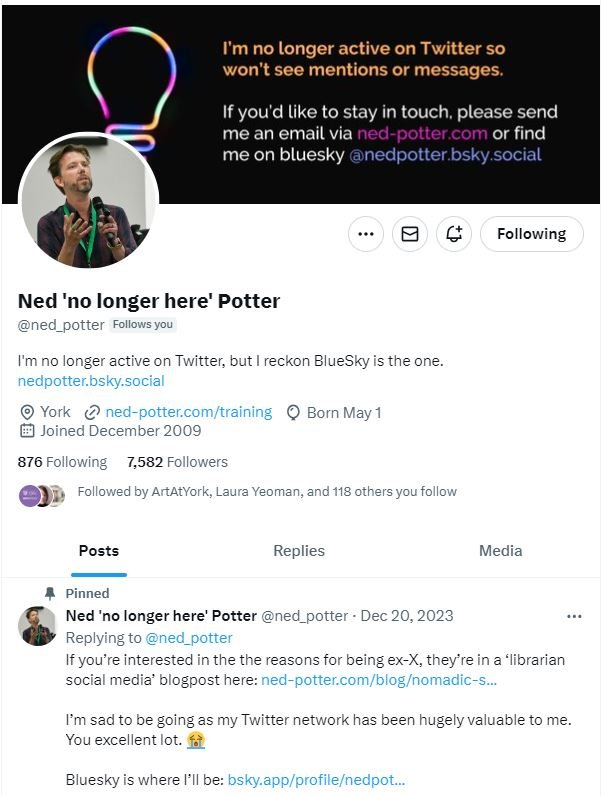I had one of my favourite professional conversations ever the other day, and as it happens it was recorded! I was honoured to be a guest on the Keeper & Curator podcast, run by my colleagues at York Helena Cox and Gary Brannan, which despite being new has already been fantastically successful (number 1 in the Visual Arts UK podcast chart, wooop). I’ve loved long-form conversation podcasts for so long, so to be actually in one and have a really great discussion was properly fun. We talked a lot about social media, about what works and what doesn’t, about exploring art abroad, and about the University of York’s sculpture trail.
I know it’s a big swing to expect anyone reading this to want to listen to me on a podcast about Art, so I thought I’d provide some shownotes with time-codes that tell you what we talk about and when, in case any of it is of interest or relevance to you. A large portion of the chat is relevant to anyone interested in using social media to engage audiences, across libraries, HE, and the Arts more generally.
Here’s the podcast:
First things first, you can find the episode Social Media and Unfinished Business here on Spotify, or you can find it on Apple Podcasts if you prefer, and probably a bunch of other places besides. Here’s the Apple version embedded:
0:00 - 2:17 Preamble
The welcomes and hellos happen in this bit.
We recorded in the Library’s Podcast Studio - it’s one of our most popular services and I’ve spent some time marketing it, but never used it before. It was pretty nice, extremely high quality mics where you feel like you can hear the blood in your veins they’re so sensitive… Here we all are, in a post-record selfie.
2:18 - 13:49 social media and the arts
In this section we talk a little about the personality-driven social media that Helena does via the Art@York profiles, which I think is absolutely brilliant. You can find Art@York on Facebook here (the former Library account, as you’ll hear if you listen to this bit!), or Art@York on Insta here, or Art@York on Bluesky here.
We talk a lot about why art collections work on Instagram etc, and I found it really interesting to explore this. I do think the overwhelming availability of everything means curation of any kind is more important than ever, and I do think we’ve all become so good at using imagery in our social media that it just becomes white noise - so meaningful imagery on social media really makes a difference.
13:50 - 18:37 can social media be taught or is it intuitive?
An interesting question from Gary prompts a discussion about whether social media can be taught. It absolutely can be (please get in touch and book a workshop!) but certain approaches do rely on an intuitive grasp. Either way though, putting personality into your comms is what builds relationship and engagement - if it’s fully corporate, people just do not respond.
18:38 - 24:35 AI in social media
I have over time become massively against using for example AI-generated imagery on professional social media, and this section covers why. You basically alienate a large part of your potential audience if you continue to use AI slop.
24:36 - 29:39 The different demographics for different social media platforms
One of the traps institutions often fall into when doing social media is treating all the platforms the same, and cross-posting content. I get why this happens, with time-pressures being primarily to blame, but the issue is that the platforms work completely differently, and have quite different demographics.
29:40 - 39:29 Creativity, music, and being from a line of artists but unable to produce visual art…
I hail from generations of artists, and I cannot draw a line or a circle or indeed absolutely anything at all, with any skill. My Mum is an incredible artist (our house is filled with things she’s made for us) and so was her Dad, Peter Walbourn. He once painted the Queen Mum and was struggling to get the detail of her brooch down in time for the end of the sitting. Why don’t you take it home with you, Her Maj suggested! Is it insured, my Grandpa asked? Oh, we couldn’t possibly afford to insure it, she replied… (He took it home anyway and my Gran slept with it under her pillow to keep it safe.)
My Great Grandfather was the painter Ernest Walbourn, and we discuss the many unfinished paintings of his we have in our house during this section of the podcast. Here’s the main himself at work - one of the things I like about this picture is he’s literally doing the thing we discuss in the episode: 70% of the painting is done to completion, but the sky is entirely untouched, a literal blank canvas.
The other part of Ernest lineage which did NOT reach me is sporting prowess: he was in fact invited to join the Olympic shooting team, and my parents have a letter from an Olympic committee member reassuring colleagues that Ernest was a gentleman, despite being an artist…
In particular we talk about one painting on my wall, of a tree, unfinished, which I absolutely loved Helena’s expert take on. Here’s the pic.
After listening to the podcast my Mum got in touch to say this was the very tree under which my grandparents got engaged! Lovely stuff.
39:30 - 52:17 My top tip for visiting galleries and museums
If you only take one thing… Steal my Te Papa techniques as described in this section! Some more on the New Zealand Lianza experience, including images of the museum in its glorious emptyness, here. Plus more on the Latvian children’s art / library strategy here.
We also discuss UX methodologies, and the benefits of having a curated art collection on campus.
52:18 - end My favourite art on campus
I insisted they ask me this question - what is my favourite art on campus? I talked about two pieces. First of all Beyond and Within by Joanna Mowbray.
The piece I picked as my favourite was the Singing Stone by Gordon Young. I mentioned in the podcast the Alumni post on Insta of Helena describing the piece, and the YouTube shorts version is embedded below:
If you’ve made it this far, thank you for reading! I absolutely loved being on the podcast, so thank you Helena and Gary for having me.










